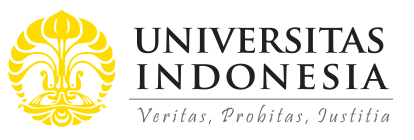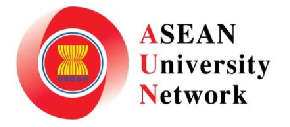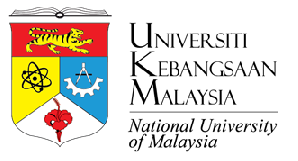
Abstract
This paper explores the ‘discursive’ as well as the physical terrains of Country as part of a co-design methodology employed with Nukunu. It examines a curatorial and archival perspective in its documenting of Nukunu Country forming part of the Time Layered Culture Map (TLCMap) digital humanities infrastructure project. A literature review from Aboriginal and non-Aboriginal scholars presents perspectives around decolonizing Western ontological and epistemological structures as a mode of disrupting current, entrenched codification of knowledge. This paper seeks primarily to explore the Indigenization of information shared and re-presented in the co-design exercises of designing on Country to contribute to the preservation of Traditional Knowledge, in addition to designing facilities to house community whilst undertaking these practices. The methods include exploration of scholarly literature of co-design and architectural ethnographic practices, through a lens of recounting first-hand, in-the-field experiences that range from observational to direct engagement in cultural burning and camping on site to further understand and connect with all that constitutes Country. This study highlights the importance of observation and participation in architectural ethnographic methods, which positively strengthen the co-design process and support the preservation of cultural burning practices. It shows how the process reveals the cultural and ecological wisdom of the traditional community, contributing to the knowledge of Indigenous land management techniques.
References
Arthur, P. L., Champion, E. M., Craig, H., Gu, N., Harvey, M., Haskins, V., May, A., Pascoe, B., Piper, A. J., Ryan, L., Smith, R., & Verhoeven, D. (2020). Time-layered cultural map of Australia. Digital Humanities in the Nordic and Baltic Countries Publications: DHN2020 Pre-Conference Proceedings, 3(1), 184–191. https://doi.org/10.5617/dhnbpub.11187
Asquith, L., & Vellinga, M. (2005). Vernacular architecture in the 21st century: Theory, education and practice. Taylor & Francis.
Australian Reseach Data Commons. (2022). Time-layered cultural map (TLCMap) 2.0. https://doi.org/10.47486/PL069
Bessarab, D., & Ng’Andu, B. (2010). Yarning about yarning as a legitimate method in Indigenous research. International Journal of Critical Indigenous Studies, 3(1), 37–50. https://doi.org/10.5204/ijcis.v3i1.57
Cooms, S., Leroy-Dyer, S., & Muurlink, O. (2024). The rise of virtual yarning: An Indigenist research method. Qualitative Research. https://doi.org/10.1177/14687941241234
Corradi, E., & Frattari, C. (2024). Addressing vulnerability through place-based knowledge and co-design practice. In M. Bovati, A. Moro, & D. Villa (Eds.), In-Presence/the body and the space: The role of corporeity in the era of virtualization (pp. 691–693). Publica.
Corroto, C. (1996). Constructing architects: A critical ethnography (Publication No. 9620004) [Doctoral dissertation, Ohio State University]. ProQuest Dissertations and Theses Global.
Günel, G., & Watanabe, C. (2024). Patchwork ethnography. American Ethnologist, 51(1), 131–139. https://doi.org/10.1111/amet.13243
Hromek, D. S. (2019). The (re)indigenisation of space: Weaving narratives of resistance to embed Nura [Country] in design [Doctoral dissertation, University of Technology Sydney]. OPUS. http://hdl.handle.net/10453/137126
Krichauff, S. (2019). A boomerang, porridge in the pocket and other stories of “the Blacks’ camp.” Journal of Australian Studies, 43(3), 299–316. https://doi.org/10.1080/14443058.2019.1648309
Lanier, G. M. (2009). [Review of the book Vernacular architecture in the twenty-first century: Theory, education and practice by L. Asquith & M. Vellinga].Journal of Architectural Education, 63(1), 160–161. https://doi.org/10.1111/j.1531-314X.2009.01050.x
Maina, J. J. (2015). Architects and interdisciplinary research: Reflections from ethnographic and measured fieldwork. In S. Laryea & R. Leiringer (Eds.), Procs 6th West Africa Built Environment Research (WABER) Conference (pp. 131–144).
Mckinnon, M., & Thomas, J. (Directors). (2022). Close to the bone [Film]. Reckless Eye Productions.
McKinnon, M. (Director). (2024). Nukunu yapatya[Film].
Memmott, P. (1980). Lardil properties of place: An ethnological study in man-environment relations. [Doctoral dissertation, The University of Queensland]. UQ eSpace. https://doi.org/10.14264/uql.2014.1
Memmott, P. (2007). Gunyah, goondie + wurley: The Aboriginal architecture of Australia. University of Queensland Press.
Memmott, P., & Keys, C. (2017). The emergence of an architectural anthropology in Aboriginal Australia: The work of the Aboriginal Environments Research Centre. Architectural Theory Review, 21(2), 218–238. http://dx.doi.org/10.1080/13264826.2017.1316752
Mobile Language Team. (n.d.). Nukunu [Map]. https://mobilelanguageteam.com.au/languages/nukunu/
Nichols, J. (2024, December 20). Nukunu cultural burning. Vernacular Knowledge Research Group.
Nichols, J., Newchurch, J., Rigney, R., Miller, T., & Sansbury, B. (2024). Yarning journeys: Ngadjuri perspectives on cultural heritage. In J. Nichols & B. Mehra (Eds.), Data curation and information systems design from Australasia: Implications for cataloguing of vernacular knowledge in galleries, libraries, archives, and museums (pp. 183–199). Emerald Publishing Limited. https://doi.org/10.1108/S0065-283020240000054015
Nukunu Wapma Thura Aboriginal Corporation. (n.d.). Projects and partnerships.https://nukunu.org.au/projects-and-partnerships/
Rapoport, A. (1969). Folk architecture: House form and culture. Prentice-Hall.
Ryan, L. (2017). Colonial frontier massacres, Australia, 1788 to 1930. University of Newcastle Newsroom. https://c21ch.newcastle.edu.au/colonialmassacres/map.php
Ryan, L. (2020). Digital map of colonial frontier massacres in Australia 1788-1930. Teaching History, 54(3), 13–20.
Schön, D. A. (1987). Educating the reflective practitioner: Toward a new design for teaching and learning in the professions. Wiley.
Smith, L. T., & Millspaugh, A. (2015). Decolonizing knowledge: Toward a critical indigenous research justice praxis. In A. J. Jolivette (Ed.), Research justice: Methodologies for social change (pp. 205–210). Bristol University Press.
St John, N., & Akama, Y. (2022). Reimagining co-design on Country as a relational and transformational practice. CoDesign, 18(1), 16–31. https://doi.org/10.1080/15710882.2021.2001536
Steffensen, V. (2020). Fire country: How Indigenous fire management could help save Australia. Hardie Grant Travel.
Stender, M. (2020). Towards an architectural anthropology—what architects can learn from anthropology and vice verse. In A. Jasper (Ed.), Architecture and anthropology (pp. 8–24). Routledge. https://doi.org/10.4324/9781351106290
Terare, M., & Rawsthorne, M. (2020). Country is yarning to me: Worldview, health and well-being amongst Australian First Nations people. The British Journal of Social Work, 50(3), 944–960.
Thomas, J. (2014). Respecting protocols for representing Aboriginal cultures. Journal of the Association for the Study of Australian Literature, 14(3).
TLCMap. (n.d.). Time layered cultural map is a set of tools for searching and mapping Australian history and culture. https://docs.tlcmap.org
Trzepacz, D., Guerin, B., & Thomas, J. (2014). Indigenous Country as a context for mental and physical health: Yarning with the Nukunu community. The Australian Community Psychologist, 26(2), 38–53.
Vellinga, M. (2007). Review essay: Anthropology and the materiality of architecture. American Ethnologist, 34(4), 756–766. https://doi.org/10.1525/ae.2007.34.4.756
Yaneva, A. (2018). Editorial. New voices in architectural ethnography. Ardeth [Online], 2, 17–24. https://doi.org/10.17454/ARDETH02.03
Yunkaporta, T., & Kirby, M. (2011). Yarning up Aboriginal pedagogies: A dialogue about eight Aboriginal ways of learning. In N. Purdie, G. Milgate, & H. R. Bell (Eds.), Two way teaching and learning: Toward culturally reflective and relevant education (pp. 205–213). ACER Press. http://research.acer.edu.au/indigenous_education/38/
Recommended Citation
Nichols, Julie; Thomas, Uncle Lindsay; Thomas, Travis; Thomas, Jared; Tang, Fu Hong; and Weber, Delene
(2024).
Terrains of Country: Mapping Co-Design Methods.
ASEAN Journal of Community Engagement, 8(2), 142-163.
Available at: https://doi.org/10.7454/ajce.v8i2.1357







